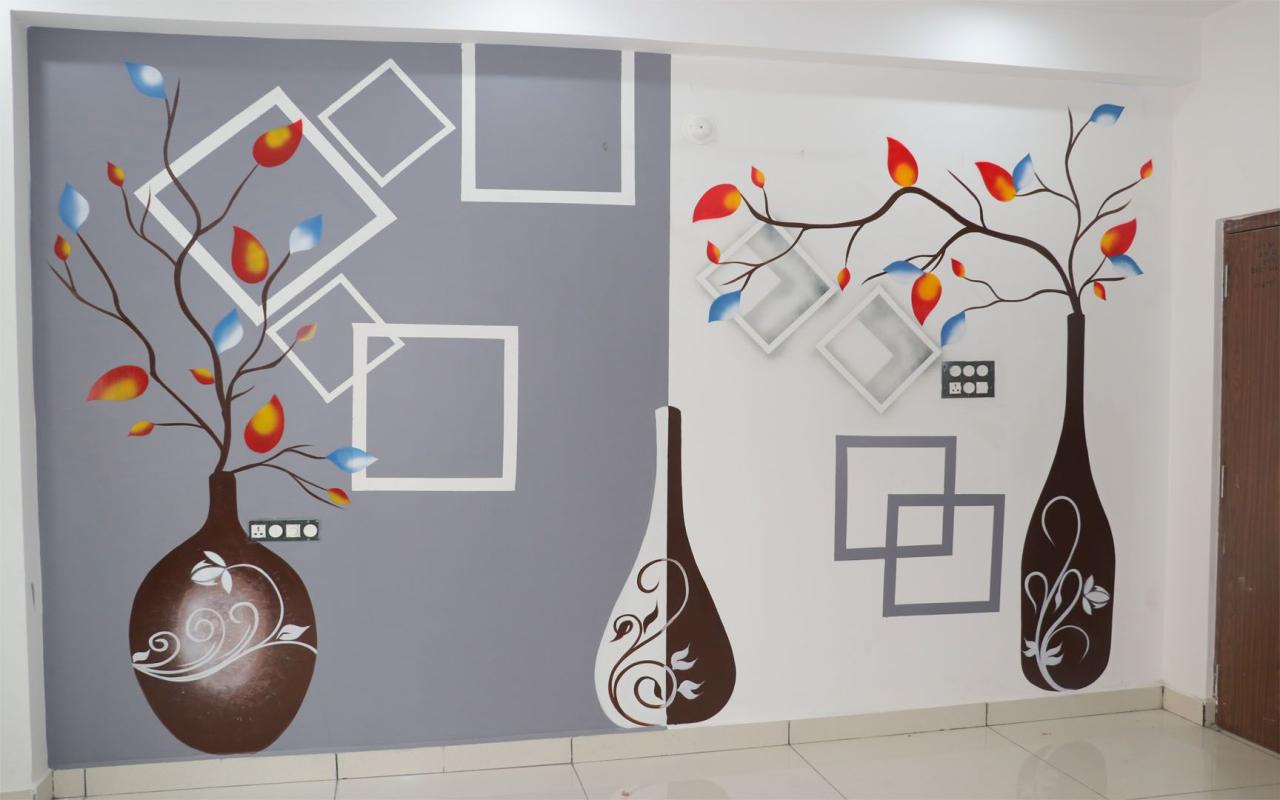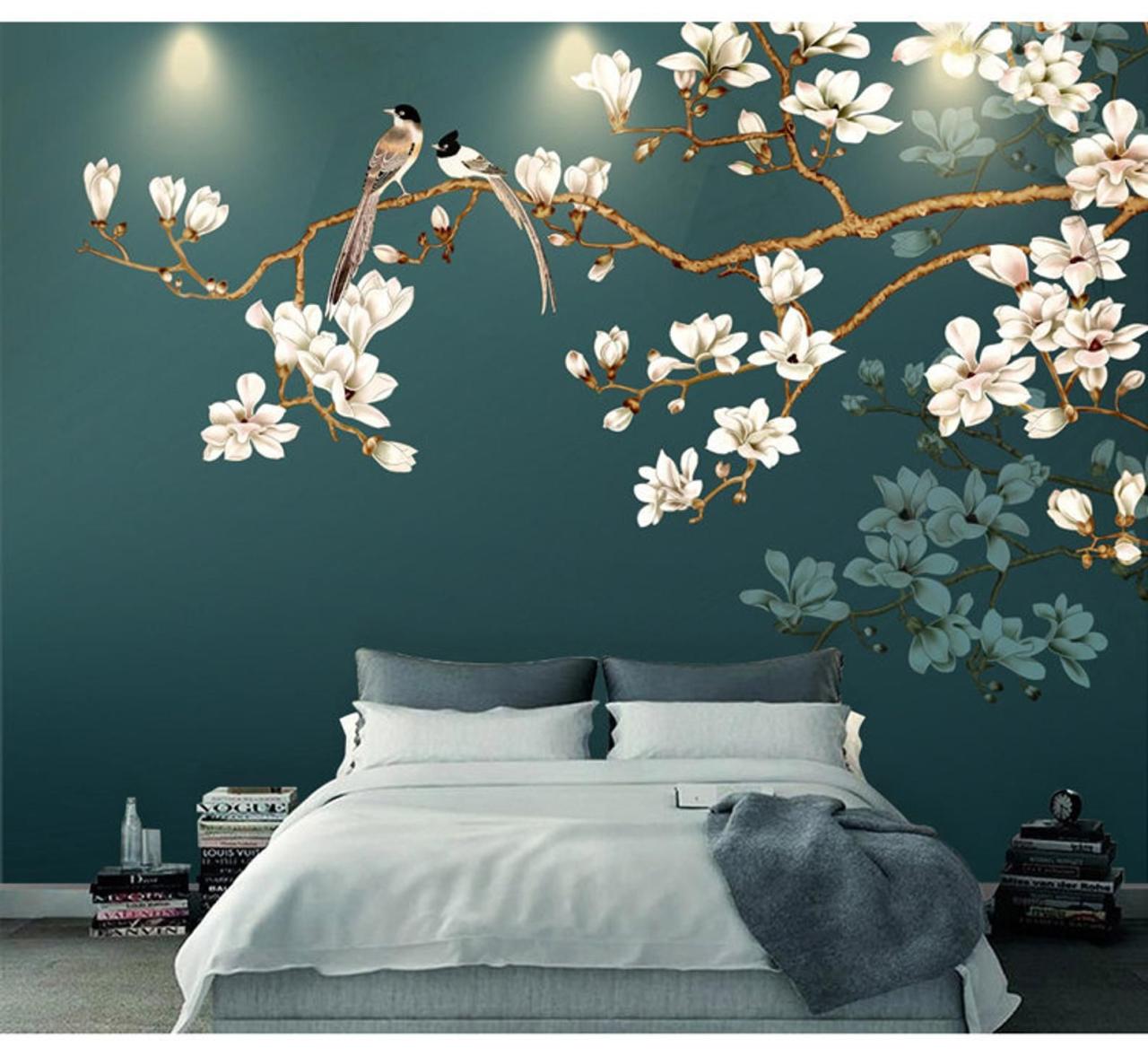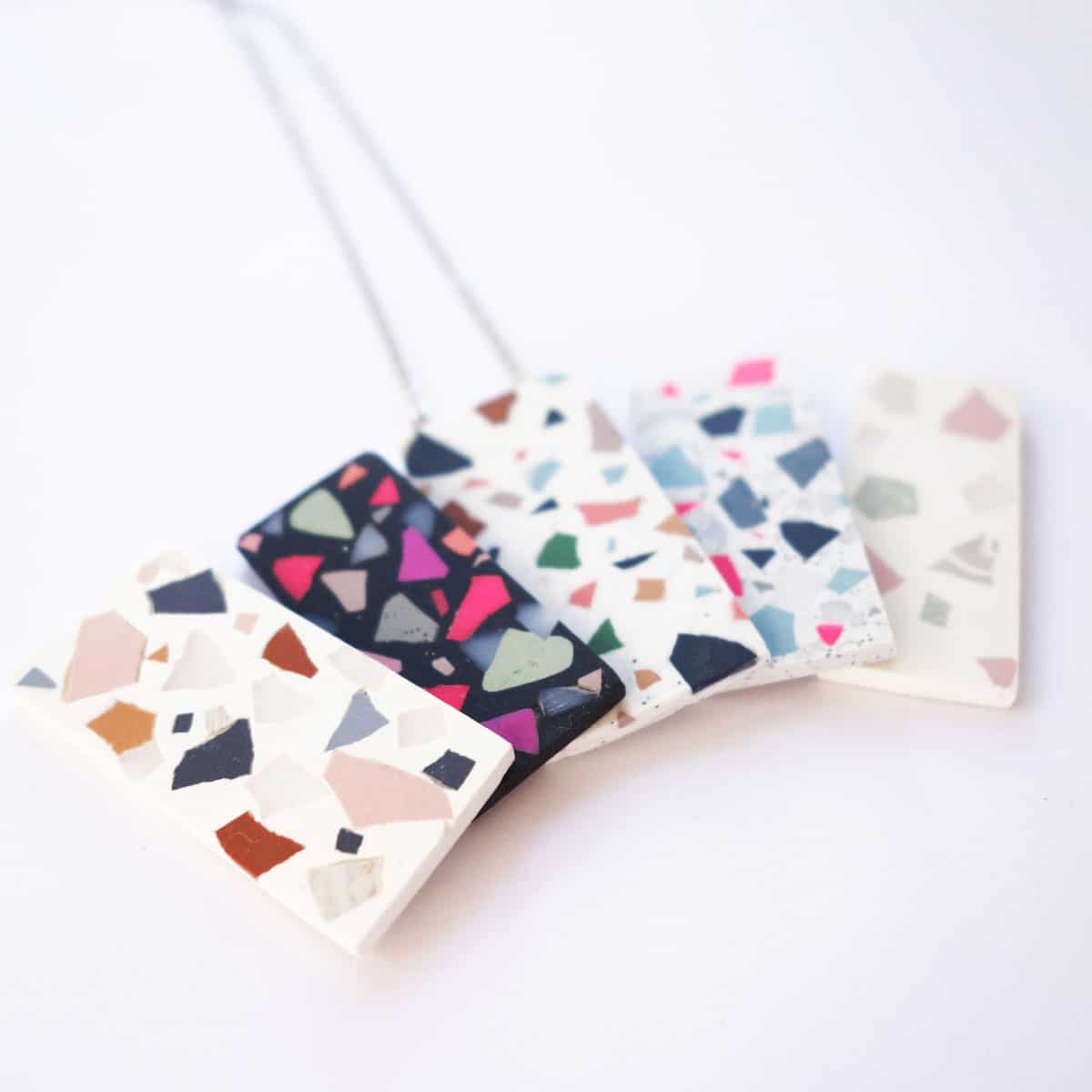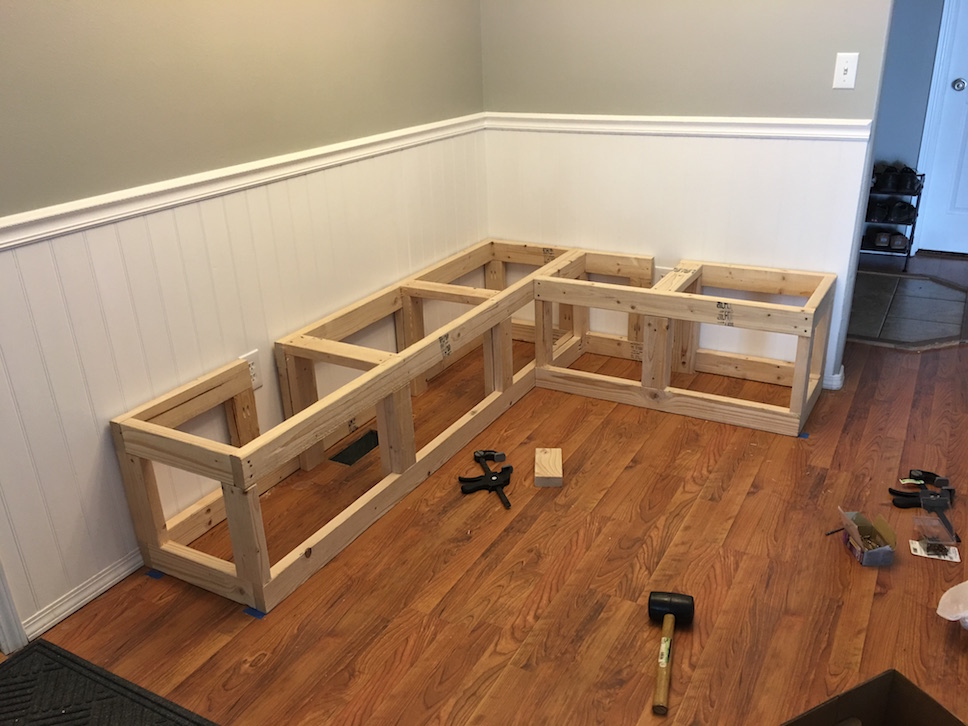Easy wall painting doesn’t have to be intimidating! This guide will walk you through the process, from choosing the right paint and tools to applying it with confidence. Whether you’re a complete beginner or just looking for some fresh ideas, we’ll provide everything you need to transform your walls with ease.
From preparing your walls for painting to choosing the right paint and applying it with ease, we’ll cover all the essential steps for a successful project. We’ll also explore creative techniques for adding visual interest and achieving a professional finish.
Preparing Your Walls for Easy Painting
A little preparation goes a long way when it comes to painting your walls. By taking the time to properly prepare your walls, you can ensure a smooth, even finish that will last for years to come. This process might seem daunting, but it’s actually quite simple and straightforward.
Gathering the Right Tools and Materials
Having the right tools and materials makes the preparation process much easier. Here’s a checklist of essentials:
- Putty knife: For filling in cracks and holes.
- Spackling paste: A quick-drying paste used for filling in small holes and cracks.
- Sandpaper: Used for smoothing out rough patches and creating a uniform surface.
- Dust mask: Protects you from inhaling dust particles while sanding.
- Paint scraper: Removes loose paint, dirt, and debris from the walls.
- Cleaning cloths: For wiping down walls and removing dust.
- Bucket: For mixing cleaning solutions.
- Tarp or drop cloth: Protects floors and furniture from paint splatters.
- Primer: Creates a smooth, even surface for the paint to adhere to.
Patching and Sanding Walls
Patching and sanding are crucial steps in preparing your walls for painting. These steps ensure a smooth and even surface for the paint to adhere to, preventing uneven paint application and creating a professional finish.
- Inspect the walls: Look for any cracks, holes, or imperfections. These areas will need to be patched before painting.
- Fill in cracks and holes: Use spackling paste or joint compound to fill in cracks and holes. Apply the paste with a putty knife, pressing it firmly into the cracks or holes. Make sure the paste is level with the wall surface.
- Let the paste dry: Allow the paste to dry completely before sanding. Drying time varies depending on the type of paste used and the humidity of the room.
- Sand the patched areas: Use sandpaper to smooth out the patched areas. Start with a coarse-grit sandpaper and gradually move to a finer-grit sandpaper. The goal is to create a smooth, even surface that blends seamlessly with the rest of the wall.
- Clean the walls: After sanding, use a damp cloth to wipe away dust and debris. Ensure the walls are completely dry before proceeding to the next step.
Cleaning Your Walls Before Painting, Easy wall painting
Cleaning your walls before painting is crucial for removing dirt, grime, grease, and other contaminants. This step ensures that the paint adheres properly to the surface, preventing peeling and chipping.
- Remove any loose paint: Use a paint scraper to remove any loose paint, dirt, and debris from the walls. Be careful not to damage the underlying wall surface.
- Wash the walls: Use a mild detergent and warm water to wash the walls. Apply the cleaning solution to a damp cloth and wipe down the walls thoroughly. Make sure to rinse the walls with clean water and allow them to dry completely before proceeding.
- Remove any mold or mildew: If you notice any mold or mildew, use a solution of bleach and water to clean the affected areas. Be sure to wear gloves and a mask when working with bleach. After cleaning, rinse the walls with clean water and allow them to dry completely.
Choosing the Right Paint for Easy Application: Easy Wall Painting
Choosing the right paint is crucial for a smooth and effortless painting experience. Different types of paint offer varying levels of ease of application, depending on factors like coverage, drying time, and finish.
Understanding Different Paint Types
Paint types vary based on their composition and intended use. For easy wall painting, consider these common types:
- Acrylic Paint: This water-based paint is a popular choice for interior walls due to its fast drying time, low odor, and easy cleanup. It offers excellent coverage and is available in a wide range of colors.
- Latex Paint: Similar to acrylic paint, latex paint is also water-based and known for its durability, ease of application, and low VOC content. It’s a good option for both interior and exterior walls.
- Oil-Based Paint: While oil-based paints offer a durable, high-gloss finish, they require mineral spirits for cleanup, making them less convenient for easy application. They also have a strong odor and take longer to dry.
Comparing Paint Finishes
Paint finishes determine the sheen and texture of the painted surface. Here’s a breakdown of popular finishes and their suitability for easy wall painting:
| Finish | Features | Suitability for Easy Wall Painting |
|---|---|---|
| Flat | Matte finish, hides imperfections well, but not very durable | Good for easy application, especially on walls with minor imperfections |
| Eggshell | Slightly more sheen than flat, easy to clean, durable | Suitable for most walls, offers a balance of durability and easy application |
| Satin | Moderate sheen, easy to clean, durable, resists moisture | Good for high-traffic areas like kitchens and bathrooms |
| Semi-Gloss | High sheen, very durable, easy to clean, resists moisture | Suitable for trim, doors, and high-moisture areas |
| Gloss | Highest sheen, very durable, easy to clean, reflects light | Best for high-traffic areas and surfaces that need frequent cleaning |
Factors to Consider When Choosing Paint
The ideal paint for your project depends on several factors:
- Wall Type: Different wall types require specific paint types. For example, drywall typically requires a latex paint, while plaster walls might benefit from an acrylic paint.
- Desired Finish: The desired finish influences the choice of paint. For a smooth, matte look, flat or eggshell finishes are suitable. High-traffic areas might require a satin or semi-gloss finish for durability.
- Lighting: The amount of natural light in a room can affect the appearance of the paint. Lighter colors reflect more light, making a room appear brighter.
- Budget: Paint prices vary based on brand, quality, and type. It’s essential to choose a paint that fits your budget while meeting your project requirements.
Creating Interesting Wall Designs
Transforming your walls from plain to captivating is a fantastic way to personalize your space. With simple painting techniques, you can create eye-catching designs that reflect your style and enhance the ambiance of your room.
Geometric Patterns
Geometric patterns are a popular choice for adding visual interest to walls. They offer a clean and modern aesthetic that complements various room styles. You can create simple patterns like stripes, chevrons, or even intricate geometric designs using painter’s tape.
- Stripes: Stripes are a classic design element that can add a sense of movement and dimension to a room. You can play with different stripe widths, colors, and orientations to create a unique look. For instance, a horizontal stripe pattern can make a room appear wider, while vertical stripes can make a room seem taller.
- Chevrons: Chevrons, also known as zigzags, offer a more dynamic and eye-catching pattern than stripes. You can use painter’s tape to create a series of V-shaped patterns in contrasting colors.
- Geometric Shapes: Geometric shapes, such as squares, triangles, and circles, can be combined to create intricate and visually appealing patterns. You can use painter’s tape to Artikel the shapes and then fill them in with different colors.
Accent Walls
An accent wall is a great way to add a pop of color and personality to a room. It involves painting one wall a different color or with a unique design while keeping the other walls neutral.
- Bold Colors: A bold color accent wall can be a focal point in a room, adding energy and vibrancy. For instance, a bright blue accent wall in a living room can create a sense of excitement and encourage conversation.
- Metallic Finishes: Metallic finishes, such as gold, silver, or copper, can add a touch of luxury and sophistication to an accent wall.
- Textured Finishes: Textured finishes, like faux brick or stone, can add depth and dimension to an accent wall, creating a unique visual appeal.
Decorative Elements
Decorative elements can add a touch of whimsy and personality to your walls. These can be simple stencils, freehand designs, or even a combination of both.
- Stencils: Stencils are a great way to create intricate designs without having to be an expert artist. You can find stencils in various shapes, sizes, and patterns, allowing you to personalize your walls with ease.
- Freehand Designs: If you’re feeling creative, you can try freehand painting designs on your walls. This could include simple shapes, floral motifs, or even abstract patterns.
- Wall Decals: Wall decals are pre-designed vinyl stickers that can be easily applied to walls. They offer a wide range of designs, from simple geometric shapes to intricate murals.
Tips for Achieving a Professional Finish

A smooth, even finish is the hallmark of a professional paint job. Here’s how to achieve that look on your walls.
Avoiding Brushstrokes and Uneven Coverage
Proper technique is crucial for preventing brushstrokes and uneven coverage. Here’s how to do it right:
- Load your brush correctly: Dip the brush about a third of the way into the paint and tap the excess paint off on the side of the can. This ensures an even paint flow and reduces the chance of drips.
- Use long, even strokes: Paint in long, smooth strokes, overlapping each stroke by about half the width of the brush. Avoid going back and forth over the same area multiple times, as this can lead to brushstrokes.
- Paint in sections: Divide the wall into sections and paint each section completely before moving on to the next. This helps to ensure a smooth, even finish.
- Use a roller for large areas: Rollers are more efficient for covering large areas, and they produce a smoother finish than brushes.
Avoiding Drips
Drips are a common problem when painting, but they can be avoided with a few simple precautions:
- Don’t overload your brush: Too much paint on the brush will make it more likely to drip.
- Use a paint tray liner: A paint tray liner helps to prevent drips by catching excess paint.
- Wipe off excess paint: Before starting a new section, wipe off any excess paint from the brush or roller.
- Don’t paint too quickly: Slow and steady wins the race when it comes to painting. Taking your time will help to prevent drips.
Proper Drying Time and Ventilation
Allowing adequate drying time and ensuring proper ventilation are essential for a professional paint finish:
- Follow the manufacturer’s instructions: Each paint type has a recommended drying time, which should be adhered to.
- Ensure good ventilation: Open windows and doors to allow fresh air to circulate. This helps to prevent fumes from building up and speeds up the drying process.
- Avoid touching the paint until it’s dry: Touching the paint before it’s fully dry can damage the finish and cause smudging.
Cleaning Up and Maintaining Your Painted Walls
The final step in any painting project is cleaning up. Proper cleanup is crucial for both safety and the longevity of your painted walls. It also helps you avoid any unpleasant surprises like paint stains on your clothes or furniture.
Cleaning Up After Painting
After completing your painting project, you’ll need to clean up all the tools and materials used. Proper disposal of paint materials is also essential for environmental safety.
- Gather all your painting supplies: This includes brushes, rollers, trays, drop cloths, and any other tools you used.
- Remove excess paint from brushes and rollers: Scrape off excess paint onto a tray or newspaper.
- Clean brushes and rollers thoroughly: Use a brush cleaner or soapy water to remove all paint residue. For brushes, work the cleaner into the bristles to loosen the paint. Rinse thoroughly and allow to dry completely.
- Dispose of paint properly: Never pour leftover paint down the drain. Check with your local waste management facility for proper disposal methods.
- Clean up spills immediately: Wipe up any paint spills with a damp cloth or sponge. For larger spills, use a paint thinner or remover, following the manufacturer’s instructions.
- Remove painter’s tape carefully: Wait for the paint to dry completely before removing painter’s tape. Peel it off slowly at a 45-degree angle to prevent paint from peeling off the wall.
- Wash your hands thoroughly: Use soap and water to remove any paint residue from your hands and skin.
Maintaining Your Painted Walls
Regular maintenance helps to preserve the beauty and longevity of your painted walls.
- Dust and wipe down your walls regularly: Use a soft cloth or duster to remove dust and dirt. For tougher stains, use a mild cleaning solution with warm water.
- Avoid using harsh chemicals: Harsh chemicals can damage the paint and leave behind streaks or discoloration.
- Touch up minor scratches and chips: Use a small brush and the same paint color to touch up any minor damage. Allow the paint to dry completely before applying a second coat if needed.
- Protect your walls from moisture: Avoid getting water on your walls, as this can cause the paint to peel or crack.
Protecting Painted Walls from Damage
Taking steps to protect your painted walls can prevent wear and tear and extend their lifespan.
- Use furniture pads: Place furniture pads on the bottom of furniture legs to prevent scratches on the walls.
- Install wall protectors: Consider installing wall protectors in high-traffic areas, such as hallways and doorways, to prevent scuffs and marks.
- Use a clear sealant: Apply a clear sealant over your painted walls to protect them from stains and dirt. This is especially helpful in high-traffic areas or kitchens.
- Avoid hanging heavy objects directly on the wall: Use hooks or brackets to distribute the weight and prevent damage to the paint.
Easy Wall Painting Projects for Beginners
Ready to transform your space with a fresh coat of paint? Wall painting is a great way to update your home, but it can seem daunting for beginners. Don’t worry! This guide will walk you through easy wall painting projects that are perfect for those just starting out.
Accent Walls
An accent wall is a simple way to add a pop of color or texture to a room without overwhelming it. Choose one wall to highlight and paint it a contrasting color or with a patterned wallpaper.
Here’s how to create an accent wall:
- Choose your wall. Consider the focal point of the room and select the wall that will draw the most attention. A wall behind a sofa or bed is a good choice.
- Select your paint color. Choose a color that complements the other colors in the room. You can use a color wheel to help you find complementary colors.
- Prepare your wall. Clean the wall thoroughly and patch any holes or cracks. Apply painter’s tape to the edges of the wall to create a clean line.
- Paint the wall. Use a high-quality paintbrush or roller to apply the paint evenly. Apply two coats of paint for optimal coverage.
- Remove the painter’s tape. Once the paint is dry, carefully remove the painter’s tape.
Stripes
Stripes are a classic design element that can add visual interest to any room. You can create vertical, horizontal, or diagonal stripes using painter’s tape and two different colors of paint.
Here’s how to create stripes on your wall:
- Choose your colors. Select two colors that complement each other and the overall decor of the room.
- Plan your stripe design. Decide on the width of your stripes and the direction you want them to run. Measure and mark the wall to ensure the stripes are even.
- Apply painter’s tape. Use painter’s tape to create the stripes. Press the tape firmly to the wall to prevent paint from bleeding underneath.
- Paint the stripes. Start with the wider color first. Use a high-quality paintbrush or roller to apply the paint evenly. Let the paint dry completely before removing the tape.
- Paint the remaining stripes. Once the first color is dry, apply the second color to the remaining stripes. Let the paint dry completely before removing the tape.
Stencils
Stencils are a great way to add intricate designs to your walls without the need for freehand painting. You can find stencils in a variety of designs, from floral patterns to geometric shapes.
Here’s how to use a stencil on your wall:
- Choose your stencil. Select a stencil that complements the style of your room and your personal taste.
- Prepare your wall. Clean the wall thoroughly and patch any holes or cracks. Apply painter’s tape to the edges of the stencil to prevent paint from bleeding underneath.
- Secure the stencil. Use painter’s tape to secure the stencil to the wall. Make sure the stencil is level and centered.
- Apply the paint. Use a stencil brush or a foam roller to apply the paint to the stencil. Work in small sections to avoid smudging.
- Remove the stencil. Carefully peel the stencil away from the wall once the paint is dry. If you need to repeat the stencil, allow the paint to dry completely before repositioning the stencil.
Inspiration and Ideas for Easy Wall Painting
Getting creative with your wall paint can transform your space into a unique and personal reflection of your style. Whether you prefer bold colors, intricate patterns, or subtle textures, there are endless possibilities for easy wall painting projects. This section explores a variety of inspiring ideas and resources to ignite your imagination.
Examples of Easy Wall Painting Projects
Here are some examples of easy wall painting projects that can be completed by beginners:
- Accent Wall: Painting a single wall in a contrasting color can create a dramatic focal point. Choose a vibrant hue that complements the rest of the room’s décor. Consider using a bold blue, a rich green, or a warm terracotta. The contrast can highlight a fireplace, a bookshelf, or a piece of artwork.
- Geometric Shapes: Geometric shapes like stripes, triangles, or squares can add a modern and graphic touch to your walls. Use painter’s tape to create clean lines and precise shapes. Experiment with different color combinations for a unique and eye-catching design.
- Ombre Effect: An ombre effect involves a gradual transition from one color to another, creating a soft and ethereal look. Start with a darker shade at the bottom of the wall and gradually lighten the color as you move upwards. Use a sponge or a roller to blend the colors smoothly.
- Stenciling: Stencils offer a simple way to create intricate patterns and designs on your walls. Choose a stencil that complements your style, such as floral motifs, geometric shapes, or abstract patterns. Use a sponge or a brush to apply paint through the stencil.
Gallery of Wall Painting Ideas
- Bold Colors: Embrace vibrant hues like turquoise, coral, or mustard yellow to inject energy and personality into your space. Consider using a single bold color on an accent wall or incorporating multiple colors for a more eclectic look.
- Neutral Colors: Neutral colors like gray, beige, or white provide a clean and calming backdrop for your furniture and accessories. These colors can create a sense of spaciousness and allow other elements in the room to stand out.
- Patterns: From classic stripes and polka dots to contemporary geometric designs, patterns can add visual interest and personality to your walls. Choose a pattern that complements the overall style of your home.
- Textures: Textured paint can add depth and dimension to your walls. Consider using a textured paint with a rough or uneven finish to create a rustic or industrial feel. Alternatively, a smooth textured paint can create a more sophisticated and elegant look.
Resources for Wall Painting Inspiration
- Online Tutorials: YouTube and other video platforms offer a wealth of free tutorials on various wall painting techniques. Search for specific techniques, such as “how to paint an accent wall” or “how to stencil a wall.”
- Blogs and Websites: Numerous blogs and websites dedicated to home décor and DIY projects provide inspiration and practical advice for wall painting. Search for blogs that focus on specific styles, such as minimalist, bohemian, or farmhouse.
- Social Media: Pinterest, Instagram, and other social media platforms are excellent sources of inspiration for wall painting ideas. Search for hashtags like #wallpaintingideas, #diywallart, or #homedecor.
- Paint Stores: Local paint stores often have displays of color palettes, paint samples, and design ideas. Talk to a paint specialist for advice and recommendations.
Troubleshooting Common Easy Wall Painting Issues
Even the most experienced painters can encounter challenges while painting walls. Don’t worry, though! These issues are usually easy to fix with a little know-how. This section covers some common painting problems and provides solutions to help you achieve a smooth, professional-looking finish.
Uneven Coverage
Uneven coverage is a common problem that can be caused by several factors, including using too little paint, applying the paint too thinly, or painting over a surface that is not properly prepared.
- Using too little paint: When you don’t use enough paint, the first coat won’t be thick enough to cover the existing color completely. This can result in patchy or streaky coverage, especially on darker walls.
- Applying the paint too thinly: Similar to using too little paint, applying the paint too thinly can lead to uneven coverage. The paint won’t have enough opacity to fully cover the surface, leaving the original color peeking through.
- Improper surface preparation: If you are painting over a surface that is not properly prepared, the paint may not adhere evenly. This can be due to dust, dirt, grease, or other contaminants on the surface.
Here are some solutions to address uneven coverage:
- Use enough paint: Make sure you have enough paint for the project. You can use a paint calculator to estimate the amount of paint you will need.
- Apply the paint in thin, even coats: Don’t try to cover the wall in one thick coat. Instead, apply multiple thin coats, allowing each coat to dry completely before applying the next.
- Prepare the surface properly: Before you paint, make sure the surface is clean, dry, and free of any contaminants. This includes sanding down any rough areas and filling in any holes or cracks.
Brushstrokes
Brushstrokes can be a common issue when using a brush to paint walls. They are most noticeable on flat surfaces, and can be a result of applying too much paint, not blending the paint well, or using a brush that is not the right size for the job.
- Applying too much paint: If you load your brush with too much paint, it can be difficult to distribute it evenly. This can result in noticeable brushstrokes.
- Not blending the paint well: After you apply a stroke of paint, you need to blend it into the surrounding area to create a smooth finish. If you don’t blend the paint well, you will see brushstrokes.
- Using the wrong size brush: If you use a brush that is too small for the job, you will have to make more strokes, which can increase the chances of seeing brushstrokes.
Here are some solutions to minimize or eliminate brushstrokes:
- Load your brush with the right amount of paint: Don’t overload your brush. Dip it in the paint, then wipe off any excess on the rim of the paint can.
- Blend the paint well: After each stroke, lightly blend the paint into the surrounding area using smooth, even strokes.
- Use the right size brush: Choose a brush that is wide enough to cover the area you are painting in a few strokes. For larger areas, consider using a roller.
Drips
Drips are another common painting problem, especially when using a roller. They can be caused by loading the roller with too much paint, not rolling the paint evenly, or painting in hot weather.
- Loading the roller with too much paint: If you load your roller with too much paint, it will be difficult to control, and the excess paint can drip down the wall.
- Not rolling the paint evenly: If you don’t roll the paint evenly, you can create a thick layer of paint in some areas, which can lead to drips.
- Painting in hot weather: In hot weather, the paint can dry too quickly, making it more likely to drip.
Here are some solutions to prevent or fix drips:
- Load the roller with the right amount of paint: Dip the roller in the paint tray, then roll it back and forth on the tray to distribute the paint evenly. Avoid overloading the roller.
- Roll the paint evenly: Use smooth, even strokes, overlapping each stroke by about 50%.
- Paint in cooler weather: If possible, paint in cooler weather, when the paint will have more time to dry.
Last Recap

With a little planning and the right techniques, you can achieve stunning results with easy wall painting. Whether you’re looking to refresh a room or create a bold statement, this guide provides all the information you need to get started. Remember, patience and practice are key to success. So, grab your paintbrushes, and let your creativity flow!
Easy wall painting can transform a space, but sometimes a little extra detail is needed. For a touch of intricate artistry, consider adding micro macrame accents. These delicate, handcrafted pieces bring a unique texture and visual interest to any wall, complementing your paint choices and adding a personal touch.




